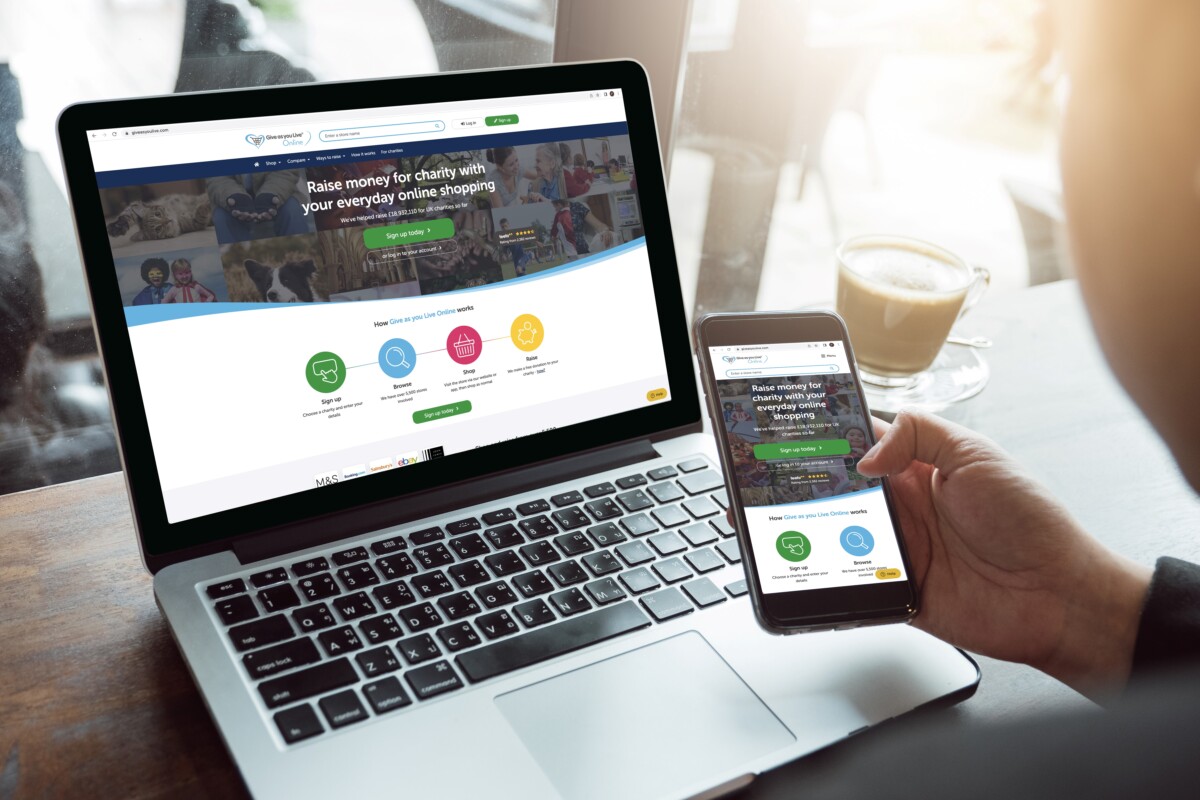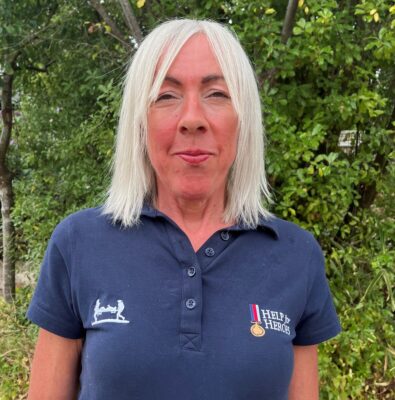When AmazonSmile announced its closure back in January this year, it left charities big and small looking for ways to plug the gap of what had, for many, been a useful source of income. For many shoppers, it had also proved an easy way to provide a little extra support to good causes at no cost to themselves.
The good news is, there are plenty of alternatives that can be an attractive option for people looking for new or cost-effective ways to support good causes. These vary from online shopping platforms like Give as you Live and easyfundraising that donate the commission they receive from the brands people shop with via their platforms, to sites that donate a flat percentage, or amount, like Charitable Bookings, those that focus on lifestyle fundraising like Giveacar, and many other sites and programmes offering free ways of giving. And these are perhaps even more attractive now with many people focusing hard on reducing their expenditure where they can.
Annabelle Risdon, Director and Head of Partnerships, Give as you Live says:
“With most people experiencing increased outgoings due to the cost-of-living crisis, raising free donations to support a charity with the things you’re already buying is appealing, especially when you consider that supporters can raise on essentials like insurance switches and weekly grocery orders.”
The income they provide tends not to be huge for charities, but what they can provide is a steady stream of donations from something that’s always working in the background.

Making a choice
But with such a variety on offer, choosing the right one – or many – for your charity, and then making this a success requires some thought. Part of this is about selecting a solution that is simple and convenient for people to use, such as something that fits in with existing behaviour. This is where affiliate programmes can be useful, by enabling people to generate donations by doing something they do anyway – shopping.
With the variety of solutions available, it’s also about understanding which ones might appeal to the specific audiences a charity hopes to engage. Bianca Mitchell, Charity Partnership Director at Savoo says:
“It’s important to think about your supporters – how they engage in your cause and how they donate, and then try to choose platforms that match their habits. Also, try to choose multiple platforms that cater to different audiences to offer your supporters the best variety. As fundraisers, we should never put all our eggs in one basket.”
When the resources a charity may have available for managing new projects can vary, it’s also about working out what’s doable for them. eBay for Charity advises:
“When considering new fundraising options, be realistic about the time, logistics and resource that will be required. Map out what each scheme will require from you, and how you will manage it. Then hone in on what will be most beneficial, and allocate the relevant resources and staff accordingly. Things always take longer than you think, and once you’re started, be prepared to review, change and adapt as time goes by.”
Promotion tips
Perhaps the most critical element for success however is promoting the programmes chosen to supporters. While generating a donation through them might not cost people anything, most do rely on them taking an extra step to their usual practice to do so, whether it’s starting their shopping through a particular website or app, choosing to donate their loyalty points, or installing a browser extension to perform searches through. This means these programmes need to be firmly on people’s radar, and they need to understand how to use them, as well as the difference it will make to the good cause of their choice if they do.
And with individual donations generated via these fundraising methods more often than not small, promotion is also vital for encouraging as many people as possible to use them. Platforms will often offer help with promotion – Charitable Travel Marketing Manager Ally Ware for example says:
“We deliver weekly inspiration emails, social media collateral, dedicated co-branded travel offer pages, incentives and more to help our charity partners make the most of the this. We even produce our own magazine, Charitable Traveller Magazine, which provides inspiration, story-telling and charity news to our readers.”
However, the more the charity does itself, the more likely it is to be a success. Sharing content that shows how the platforms work, evidence of the results, and thanking supporters for the difference they’re making all helps to constantly remind them to make use of them.

James Moir, CEO at easyfundraising comments:
“There are a variety of giving platforms but what they all have in common is their scale. They all comprise a form of crowdfunding, so in order for the amount raised to make a difference, there needs to be a critical mass of people involved. To that end there is work involved for the charity to promote their chosen cause to promote it regularly and keep supporters engaged.
“Do you have regular content with your supporters/potential supporters to keep them engaged? Do you send newsletters, posters, emails? Or can you get the news out there via social media or through your website. It is also important to share a range of content with your supporters/potential supporters: informative content showing how the platforms work, evidence of the platforms working, while thanking supporters for making a difference and sharing what donations have helped pay for also helps to remind them to use your associated giving platform.”
Certainly with the coming months predicted to be as tough on finances, if not tougher than the last few, solutions that offer people a way to support for free, or for very little can only help.
The financials
For an idea of what a charity might get back, here’s what some of the available programmes say.

The direct debit travel card’s Charity Partnerships Lead Rory Maclean says:
“Currensea offers users savings of at least 85% compared to bank rates on international spending, and users can then decide to donate all or part of these savings to charity. Charities already using the service include St Martin-in-the-Fields Trust, The Royal Society of Medicine, Brooke Hospital for Animals and the Royal Trinity Hospice. On average we’re seeing donations of £30 to £50 a year through round ups and savings from charity card users.”
Ally Ware, Marketing Manager, says:
“According to the Office of National Statistics (based on 12 months to November 22) the average price of an overseas holiday is £827pp which is across every holiday type and every destination. Customers of Charitable Travel spent an average of £1,219pp which gives an average of £2,682 per booking and an average donation therefore of £134 per booking. The volume of bookings from charity supporters very much depends on the size of the charity supporter base (database, social channels and website visits), the propensity of supporters to book holidays and the ease at which the supporter finds out about Charitable Travel.”

Savoo
Bianca Mitchell, Charity Partnership Director, says:
“Charities should see affiliate fundraising as a long-term play. The affiliate channel tends to be high-volume but with lower returns – so it entirely depends on a few variables such as platform reach, users and promotional activity. At Savoo we typically raise anything from £50 – £1500 depending on the campaign we run and the volume this drives.”
eBay for Charity
“There are over 25k charities registered on the platform for customers to donate to when they sell on eBay, and eBay UK and our community raised $54.4mn for charity in 2022.”
Give as you Live

Annabelle Risdon, Director and Head of Partnerships says:
“Charities receive 100% of the funds raised by their supporters with no payment processing fees – it’s completely free! On average, a supporter who signs up and shops regularly for things like their groceries can expect to earn around £35 a year for their charity, but this can easily be increased with purchases that raise large donations such as holidays, insurance and utility switches. There’s no limit to the amount a supporter can raise or the number of supporters a charity can have. Charities can also raise themselves on office supplies and more!”
Charity spotlight – Help for Heroes
 Like many charities, Help for Heroes has found fundraising sites and other ways of generating ‘free’ donations a useful source of income. Clare McDermott, the charity’s Commercial Director, provides some insights into what works for them, and key tips for making it a success.
Like many charities, Help for Heroes has found fundraising sites and other ways of generating ‘free’ donations a useful source of income. Clare McDermott, the charity’s Commercial Director, provides some insights into what works for them, and key tips for making it a success.
She says:
“We have used a number of fundraising sites, which we have been actively promoting as Amazon Smile come to an end. One of our best sites for fundraising is Nectar Donate, who we work closely with, meeting up on a regular basis. With the end of Amazon Smile, there are a lot of new companies coming into the market and we make sure we do robust due diligence in terms of who they are and what they say. This is something I would suggest is paramount for charities looking to expand their presence via new sites, even if it can seem time consuming.
“The most obvious form of ‘free’ money is Gift Aid. It’s been around for years and most people who support charities already know about it. It’s definitely worth it because it increases the value of donations that meet the requirements without costing the donor anything. Not everybody signs up to Gift Aid however (you have to pay enough UK income or capital gains tax, and you have to opt in to it), so it generally means regular giving and appeal giving from individuals is boosted by about 20% in any one year. Why wouldn’t you!? Help for Heroes includes a Gift Aid form every time we mail a supporter, and it’s always present on our online donation pages. We ask people if they would kindly ‘sign up to Gift Aid even if you’re not making a donation today!’ because as long as the donor agrees, you can claim Gift Aid on donations made in the last four years.”
from UK Fundraising https://ift.tt/mxsrFLj
0 comments:
Post a Comment